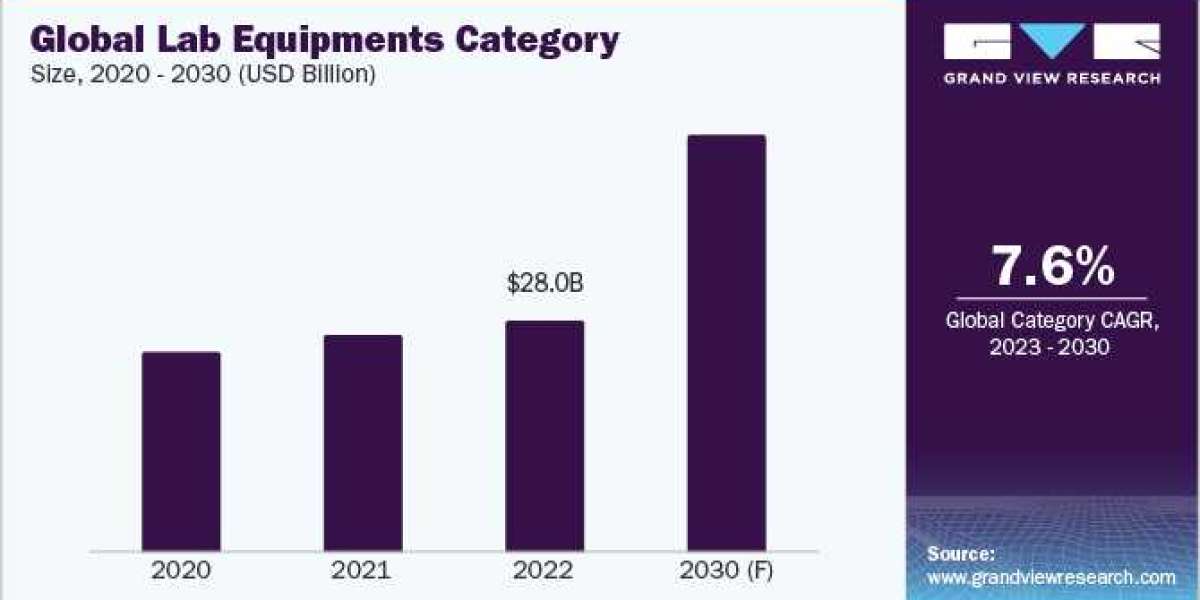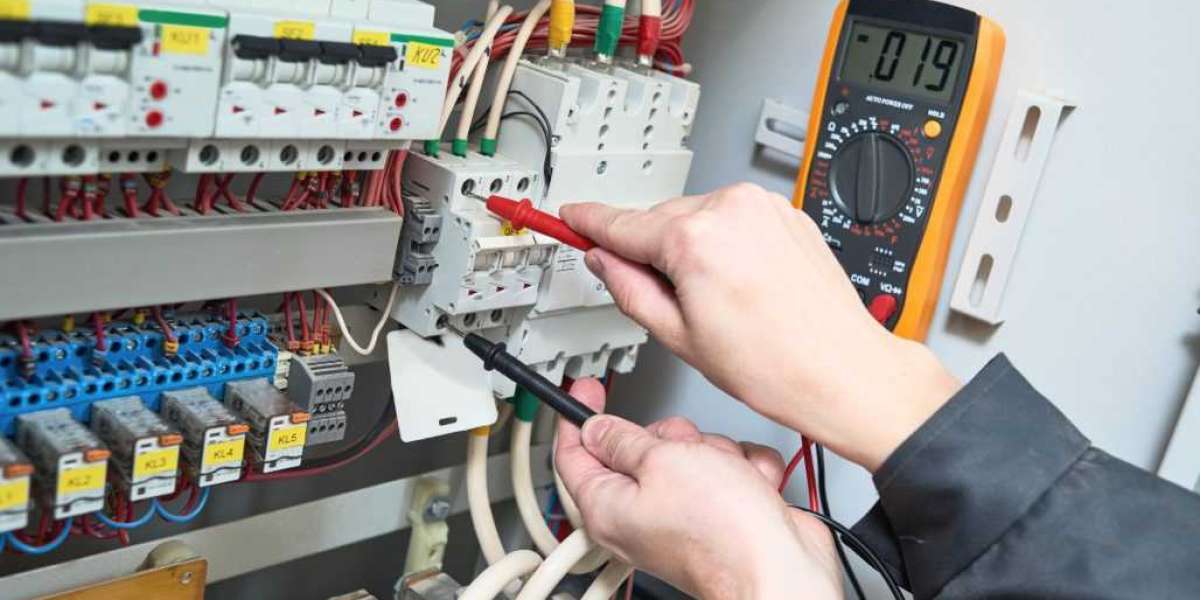The global lab equipment category is anticipated to witness growth at a CAGR of 7.62% from 2023 to 2030. In 2022, the North America region accounted for 38% of the market share followed by Asia-Pacific and Europe. Some of the major factors propelling the industry's growth in the Asia Pacific region include the growing number of clinical research organizations (CROs) and life science research development activities, along with the growing presence of prominent market participants in developingrising nations like India and China. The region is well known for being among the first to adopt automated systems, advanced diagnostic platforms, and molecular diagnostic techniques, among other cutting-edge laboratory technologies.
In terms of product segmentation, general laboratory equipment holds the largest revenue share of 31.07%, dominating the category. The segment is anticipated to maintain its dominance over the course of the projected timeframe as well. A wide range of laboratory requirements can be satisfied by the generic equipment. Such equipment is adaptable to many different research domains and offers a broad variety of applications and experiments. The analytical laboratory equipment market is anticipated to witness the fastest growth rate. Mass spectrometers, spectroscopy units, and chromatography systems are examples of analytical tools that scientists utilize to study and comprehend intricate chemical and biological processes.
Technologies such as automation, supplemented with artificial intelligence (AI) and robotics, will completely revamp the global category. In the future, fully automated labs may not resemble the current lab setup at all in terms of appearance and functionality, and analytical equipment will be arranged densely in labs to maximize space availability and resource efficiency. In addition, AI will evaluate protocols and outcomes automatically, and robotics will reshape the idea of the laboratory by automating operations that were previously done by hand. Robotics workflow automation will make it possible for automated algorithms to link to intelligent equipment remotely. Furthermore, labs will connect robotic synthesis and validation with AI-based data processing, guaranteeing a workplace where machines perform many of the tasks typically performed by researchers.
Order your copy of the Lab Equipment Procurement Intelligence Report, 2023 - 2030, published by Grand View Research, to get more details regarding day one, quick wins, portfolio analysis, key negotiation strategies of key suppliers, and low-cost/best-cost sourcing analysis
The COVID-19 outbreak resulted in a sharp rise in demand for laboratory equipments as it became essential for diagnosing, treating, and halting the virus's spread. After the outbreak of the pandemic, the demand for laboratory testing increased globally to an all-time high and laboratories conducted millions of tests every day. In addition, the laboratories saw shifts in clinical and research operations as well as significant technology improvements to combat the pandemic. The pandemic brought attention to the crucial role that laboratory equipment plays in the management of infectious diseases. Therefore, more funding should be allocated to research and development (RD) of novel and inventive laboratory instruments in order to battle future pandemics.
Lab Equipment Sourcing Intelligence Highlights
• The lab equipment category exhibits a fragmented landscape, with intense competition among the service providers.
• India is the preferred low-cost/best cost country for sourcing lab equipment owing to supportive government policies, including tax breaks and funding for research development.
• Buyers in the category possess high negotiating capability owing to the intense competition among the service providers based on the number of products and prices, enabling the buyers with flexibility to switch to a better alternative.
• Cost of raw materials, labor, machinery tools, energy, transportation storage, and other costs are the major cost components of the lab equipment category.
List of Key Suppliers
• Agilent Technologies, Inc.
• Becton, Dickinson and Company
• Bio-Rad Laboratories, Inc.
• Danaher Corporation
• Global Scientific Ltd.
• Hilton Instruments Ltd.
• PerkinElmer Inc.
• Sartorius AG
• Shimadzu Corporation
• Th. Geyer GmbH Co. KG
• Thermo Fisher Scientific Inc.
• Waters Corporation
Browse through Grand View Research’s collection of procurement intelligence studies:
• Industrial Gases Procurement Intelligence Report, 2023 - 2030 (Revenue Forecast, Supplier Ranking Matrix, Emerging Technologies, Pricing Models, Cost Structure, Engagement Operating Model, Competitive Landscape)
• Lab Chemicals Procurement Intelligence Report, 2023 - 2030 (Revenue Forecast, Supplier Ranking Matrix, Emerging Technologies, Pricing Models, Cost Structure, Engagement Operating Model, Competitive Landscape)
Lab Equipment Category Procurement Intelligence Report Scope
• Lab Equipment Category Growth Rate: CAGR of 7.62% from 2023 to 2030
• Pricing Growth Outlook: 5% - 10% increase (Annually)
• Pricing Models: Cost-plus pricing, Competition-based pricing
• Supplier Selection Scope: Cost and pricing, Past engagements, Productivity, Geographical presence
• Supplier Selection Criteria: Industries served, years in service, geographic service provision, certifications, types of equipment, number of features in a product, new and/or refurbished products, warranty after-sales support, regulatory compliance, lead time, and others
• Report Coverage: Revenue forecast, supplier ranking, supplier matrix, emerging technology, pricing models, cost structure, competitive landscape, growth factors, trends, engagement, and operating model
Brief about Pipeline by Grand View Research:
A smart and effective supply chain is essential for growth in any organization. Pipeline division at Grand View Research provides detailed insights on every aspect of supply chain, which helps in efficient procurement decisions.
Our services include (not limited to):
• Market Intelligence involving – market size and forecast, growth factors, and driving trends
• Price and Cost Intelligence – pricing models adopted for the category, total cost of ownerships
• Supplier Intelligence – rich insight on supplier landscape, and identifies suppliers who are dominating, emerging, lounging, and specializing
• Sourcing / Procurement Intelligence – best practices followed in the industry, identifying standard KPIs and SLAs, peer analysis, negotiation strategies to be utilized with the suppliers, and best suited countries for sourcing to minimize supply chain disruptions



